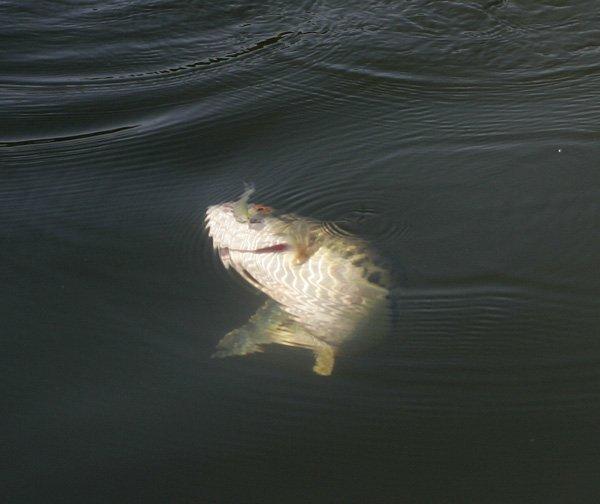Fall is usually one of the best times to catch fish. Water temps are cooling, shad and/or baitfish are bunched up and bass begin to look for an easy snack to satisfy hunger during the long winter ahead. Water color is usually clear to a bit stained and many of the lakes are drawn down to winter pool in anticipation for spring rains. All of the aforementioned variables mean the bass have the feedbags on…..right? Not necessarily if turnover comes sooner than expected.
Turnover is a layman’s term for the switch of cold and warm water in the water column. Warmer subsurface water is replaced with cooler surface water as night time temps drop into the low fifties. In recent days the water temps have dropped to 71 or 72 on the surface and only a week or so ago they were in the high eighties on our local lake. A tell-tale sign of this turnover is dingy water color, clumps of vegetation once firmly attached to the bottom surface seen floating and the shad are moving up shallow, many times running the bank on points and shorelines.
Fishing the turnover can mean tough conditions, and a general rule we follow is moving shallow. Oxygen levels are better shallow, the water cleans up quicker and the bass that are on the feed are usually pushing them into pockets and creeks. A good starting point to look for transition fish is the mouths of larger bays and secondary points. As bass come up from their summer-time haunts they transition to the first available cover where food is plentiful. Large “wolfpacks†of bass will push shad and baitfish against these banks, and it can be fast and furious when they are found.
It’s also a great time to fish topwaters like the Lucky Craft Sammy, a Heddon Zara Spook, Storm Rattlin’ Chug Bugs and poppers.












